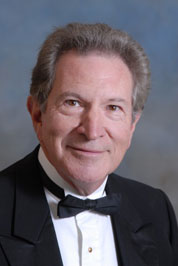Following a tour with the Cleveland Orchestra, Adrian Gnam traveled to Nice in July of 1965 to study with Marcel Tabuteau. For eight intensive weeks he worked with Tabuteau, absorbing the master’s indelible musical ideas. The following written notes were taken during that time. Gnam was principal oboist of the Cleveland Orchestra under George Szell and the American Symphony under Leopold Stokowski. He is currently a Distinguished Artist in Residence at Mercer University and is Director of the International Conductors Workshop and Competition. He was Music Director of the Midland, Eugene and Tuscaloosa Symphonies and for twenty-seven years was Music Director of the Macon Symphony Orchestra. He also served as Director of the Music Program of the National Endowment for the Arts.
Notes taken during lessons with Marcel Tabuteau
by Adrian Gnam
Page 1:
T said: “The pitch of the notes should always be up, making sure not to drop it after each attack:”
“Be cognizant of the following:
- Attacks: Set the breath and air pressure before attacking; then articulate with ta…not ha or gah. [Applies to measure 16-17 above].
- Position: Hold the oboe down and keep the head up.
- Embouchure: Adjust with the change of notes. Use the syllable ‘Oh’ not ‘Ah.’ [Applies to measure 18 above].
- Dynamics: Maintain dolce. Exhale the breath through the nose during diminuendo.”
Page 2:
“Total dynamics from 1-30 (1 is next to zero):
pp: 1 / mp: 5 / mf: 9 / f: 13 / ff: 30.
Play all music on a whole note first. [applies to measures 12-23 above].
Practice low D attacks on 1 next to zero. [applies to measures 24-25 above].
Mark all solos after first thinking about the sounds of the phrases.
Gouge the cane as follows: 50mm in the middle, 40 mm on the sides.”
“Place your distribution on the wind, not your wind on the distribution.”
More on Adrian Gnam









